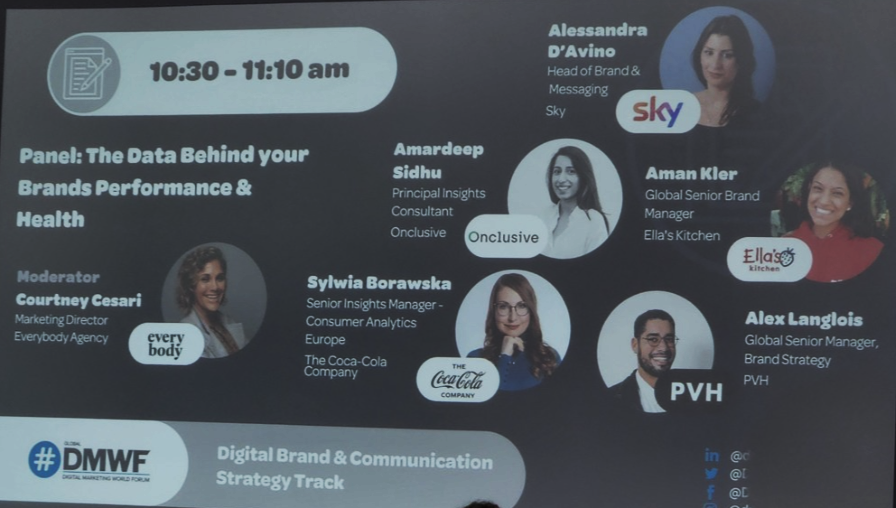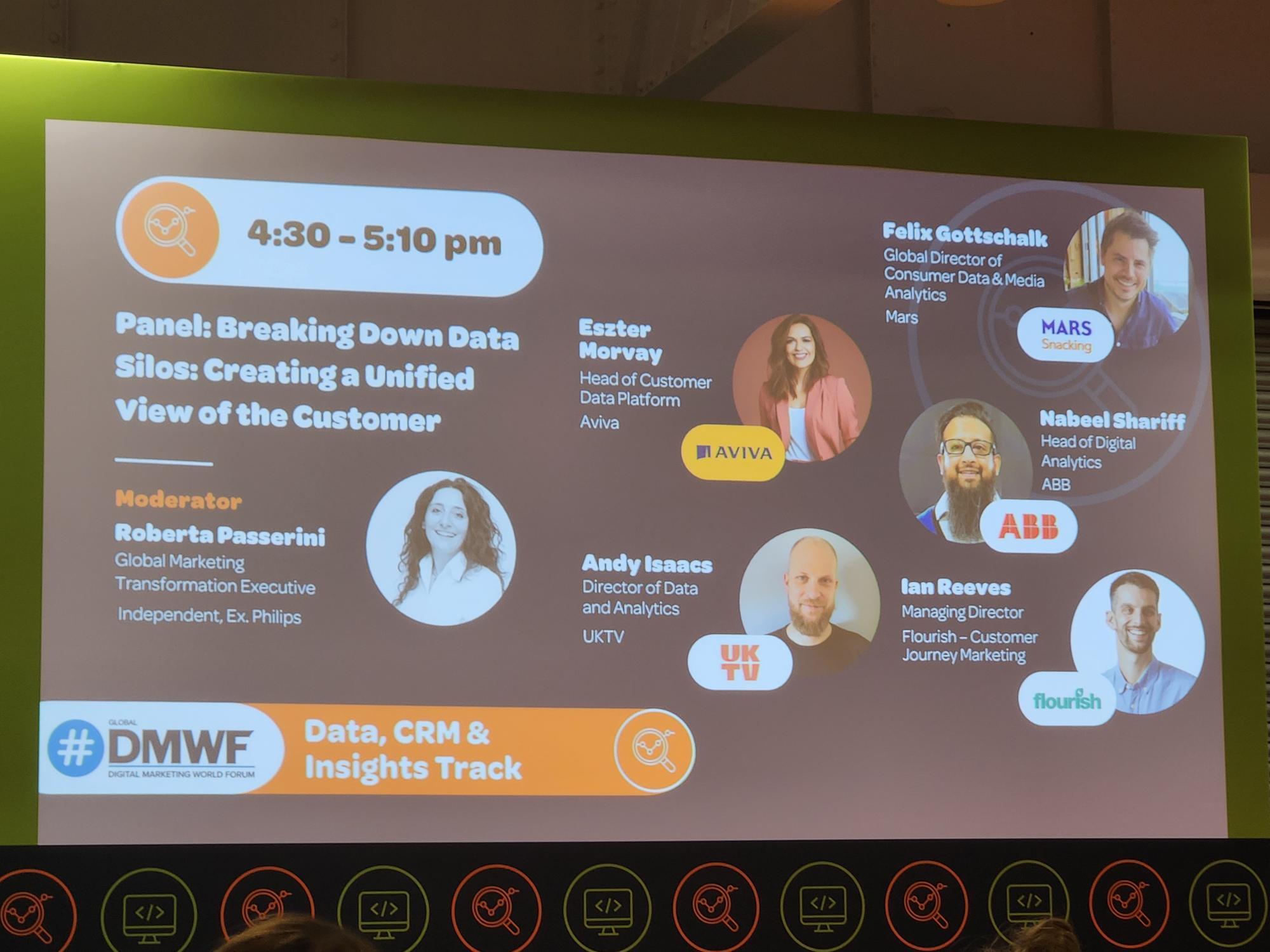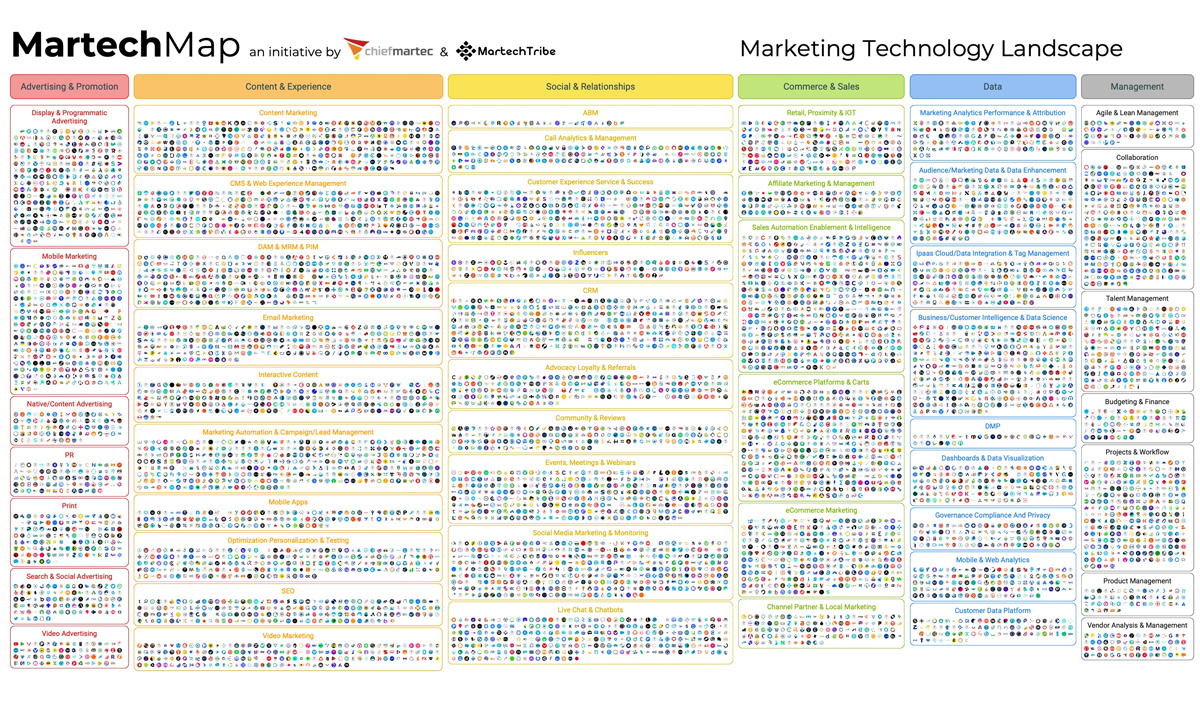DMWF returned to London with a packed agenda and a strong focus on what’s next for marketers navigating a fast-evolving digital world. With speakers ranging from global brands like Coca-Cola, Sky and Aviva to digital disruptors and agency partners, it was a two-day insight sprint across everything from AI and CRM to brand metrics and video strategy.
Appius was there to capture the themes that matter most to our clients, those shaping digital transformation and marketing effectiveness in 2025 and beyond.
Our Key Takeaways
1. AI is only as good as the human insight behind it
Dexcom’s EMEA CX and Insights Lead, Georgina Farmer, opened with a sharp perspective on blending human empathy with AI-driven efficiency. She described implementing a tool (Discuss), to combine scalable, human-led feedback with embedded consent and insight centralisation.
The goal? Make deep customer understanding accessible across the business—not just in silos.
The lesson: Technology works best when it supports empathy, not when it replaces it.
2. There’s no magic metric—and that’s okay
In a standout panel featuring senior leaders from Coca-Cola, Sky, Ella’s Kitchen, and PVH, one insight rang clear: metrics like awareness, NPS or engagement are only meaningful if they ladder up to behavioural change and what drives actual customer decisions, not just clicks.
When asked,
“What’s the best metric to measure brand health?”,
Sylwia Borawska, Senior Insights Manager at The Coca-Cola Company, didn’t hesitate:
“It depends.”
It was a refreshingly honest response, and one that set the tone for the entire session.

In an age where marketers are often expected to surface one headline KPI, Sylwia reminded us that brand success is contextual. Every business operates within its own category dynamics, maturity curve, and audience behaviour. The most effective metrics aren’t universal but are tailored to your brand’s objectives and stage of growth.
For Sky’s Head of Brand & Messaging (Alessandra D’Avino), who takes full accountability for the Sky Business brand health, spontaneous awareness is a key brand metric. She noted this was particularly important in the B2B sector. She explained that their strategy starts by asking (and continually asking):
“What are the rules of the game?”
In other words, what matters most in their specific market and category? By identifying the most meaningful drivers of success (like awareness that leads to sales), they tailor their metrics accordingly.
3. Your tech stack should follow your strategy—not the other way round
From Admiral to Everton Football Club, the conversation turned to tech maturity and CRM evolution. Several brands are rethinking their CDP and CRM infrastructure—but the smart ones aren’t chasing shiny objects. They’re solving real problems and using tech to enhance data literacy, not complexity.
Admiral took four years to design the right martech strategy. Everton is using its new stadium to connect data to real-world fan behaviour. Both proved that patience and clarity beat speed and hype.
4. You don’t have to break every silo to create change
Yes, silos are often seen as blockers. But, as UKTV’s data lead pointed out, sometimes they enable iterative progress—especially in organisations that have legacy systems, such as Aviva. Connecting operational and marketing data is hard, but progress is possible with the right mindset and support.

Think: smaller wins, clear ownership, and stakeholder fluency. Not all change has to be radical.
5. Video strategy starts with the first three seconds
When it comes to video marketing, attention is the currency—and you have just seconds to earn it. Brands like TUI and Viator showed how even simple shifts—like using video thumbnails across key pages—can deliver a measurable engagement lift. The formula? Dramatise the problem, intrigue the viewer, and lead the story.
6. CMO vs CDO? It’s time for better alignment
Digital transformation isn’t slowing down and as it gathers pace, the roles of marketing and digital leadership are increasingly converging. The once distinct lines between the Chief Marketing Officer (CMO) and the Chief Digital Officer (CDO) are shifting.
What’s driving the change? A perfect storm of rising customer expectations, relentless tech innovation, and the pressure to deliver measurable, data-led outcomes. Today, success isn’t just about owning a channel or a function, it’s about shared accountability for growth.
Ex-Googler David Keene re-iterated Google’s mantra to make ‘moments that matter’, for customers. To do this, leaders from Unilever, and Premier Foods recognised that a ‘unicorn hire’ of a CMO who also fully understands the technical elements needed for today’s digital strategy, is extremely unlikely. Rather, they concluded organisations need to foster collaborative joined-up work between CMO’s and CDO’s.
All agreed that the presence of an agency as consultants to bring these two teams together and guide the change needed in the organisation was integral to successful digital transformation, and achieving competitive edge.
8. Marketing teams are overwhelmed—and it’s costing creativity
Karla Wentworth, Chief Strategy Officer at IMG, closed with some a striking stats from a report of 200 CMO interviewees;
- 60% of marketers’ time isn’t spent on marketing.
- 71% of senior marketeers say they often lose creative time because they have to troubleshoot their technology
- 92% of CMO’s say that if they had known how tech-heavy marketing would be, they wouldn’t have gone into the role.
From troubleshooting tech to fighting for support, senior marketers are calling for a shift to create space, champion creativity, and treat Marketing Experience (MX) as a category of its own.
Final thoughts
DMWF 2025 showed us a sector in motion striving for clarity, looking for smarter solutions, and still deeply human at its core. Whether it’s aligning CMOs with data leaders, transforming tech stacks, or reclaiming creative time, the challenges are real, but so are the opportunities.
At Appius, we’re ready to help our clients face them head-on. Want to talk through what this could mean for your brand? Let’s have a coffee.
About Author




